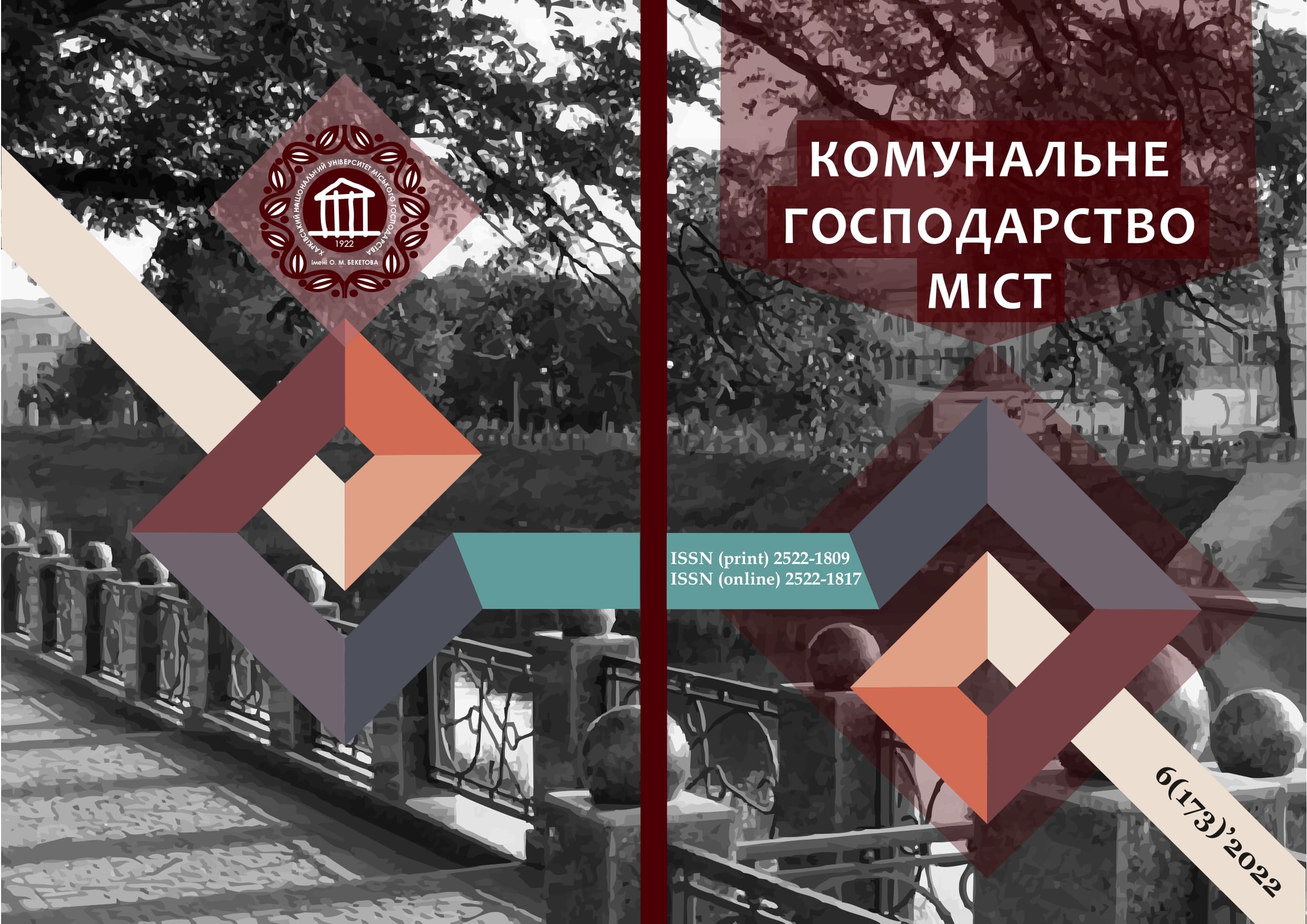CONDITION OF PRESERVATION AND METHODS OF MATERIAL EVALUATION OF THE OBJECTS OF ARCHITECTURAL HERITAGE IN PRYKAPATTIA
DOI:
https://doi.org/10.33042/2522-1809-2022-6-173-42-48Keywords:
architectural monument, state of preservation of architectural heritage, assessment of architectural heritage objectsAbstract
The Ukrainian state is a country with centuries-old history, on her walks of life unique sights of architectural inheritance are kept. Prykarpattya counts 3944 sights of cultural heritage, from what 1443 are the objects of sights of architecture, 90 sights are the objects of national value, other 1353 are local.
Two monuments of sacred architecture are included in the UNESCO World Heritage List: the Church of the Holy Spirit in 1598 in Rohatyn and the Church of the Nativity of the Blessed Virgin Mary in 1808 in the village of Nyzhnii Verbizh, Kolomyia district.
The basis of the development of the state is the preservation of cultural heritage, because it is a kind of engine of socio-cultural development of each nation. Preservation can be carried out by protecting, including material elements in modern urban planning, maintaining and monitoring the state of preservation and functioning of the cultural heritage object.
The material part of the architectural heritage includes: urban planning systems, buildings and structures, anthropogenic landscapes, monuments of architecture, urban planning, monumental art, archeology, etc. The intangible part of the architectural heritage includes: professional experience, concepts theoretical views and ideas accumulated by the people and fixed in any form.
Issues related to the protection and preservation of architectural heritage are regulated by the Convention for the Protection of European Architectural Heritage, which was ratified in 2006.
The issue of assessing the architectural heritage is spelled out in the Law of Ukraine “On the Protection of Cultural Heritage”, which states that each architectural monument is an object of real estate and is subject to monetary valuation, since it carries property value.
The article describes the number of architectural objects that we refer to as cultural monuments of national importance and on the example of several of them described their current state of preservation and architecture, as we see most of the architectural monuments need restoration.
In the article, we analysed the methodology for assessing the state of preservation of architectural monuments and methods of monetary valuation of architectural objects and determined that none of them takes into account the historical value of the architectural heritage object, so we proposed to identify and take into account the following main criteria for evaluating an architectural monument: construction period, historical memory of the object, location of the object, tourist potential, socio-cultural object, uniqueness of the object, authenticity of the object.
It is necessary to take into account the historical aspect in the methods of assessment, first of all, in order for people to realize the importance of preserving and protecting architectural objects.
References
Bevz M.V. (2001). Historical cities of the Western region of Ukraine: problems of study and preservation. Notes of the Shechenko Scientific Society. Proceedings of the Commission on Architecture and Urban Planning. NTSH. V.241. 84-112.
Baronch. S. (1858). Sights of the city of Stanislaviv. Lviv: In the printing house of the Ossolinski factory. 191.
Vecherskyi V.V. (2004). Lost shrines. K: Tech. 176.
Hrabovetskyi V. (2001). Ivano-Frankivsk in historical and cultural monuments. Ivano-Frankivsk: Nova Zorya. 130.
Dubyk Yu. Ya. (2004). Historical and architectural justification of the cost of architectural monuments. Visnyk of «Lviv Polytechnic National University». No 505. 360– 369.
Kurjer Stanislawowski (1895) 26 May. Stanislawow. No 506.
Mykhailovskyi E.V. (1971). Restoration of architectural monuments. Development of theoretical concepts. Moscow: Stroizdat.190.
Method of monetary valuation of the monument, approved by the Resolution of the Cabinet of Ministers of Ukraine of 26 September 2002. [Electronic resource]. No. 1447 Access mode: zakon.rada.gov.ua.
Pollak, Martha D. (1991). Mitary Architecture, Cartography and the Representation of the Early Modern Europian City. The Newberry Library, Chikago, 1991. 120.
Rychkov P. A. (1996). Town-planning evolution of Stanislav in the 17th-19th centuries. Architectural Heritage. – Moscow. Issue 41. 81-89.
Taras Ya. M. (2007). Sacred wooden architecture of Ukrainians of the Carpathians: cultural and traditional aspect. Lviv. Institute of Ethnology of NAS of Ukraine. 639.
Fihol M. (1997). Art of Ancient Halych. Kyiv: Mystetstvo. 227.
Tsaryk Z. Tsaryk Mykhailo. (2004). 100 lost wooden churches in Western Ukraine. Lviv: ― MYTH. 298.
Habrel M. (2013). Some problems of evaluating unique architectural monuments based on the «distance to ideal» method. Bulletin of «Lviv Polytechnic National University». 757. 7-10. 9.
Charnetskyi. V. (2001). History of architecture and urban planning. The Academy of Finance and Management in Białystok. 267.
Yurchenko P.H. (1970) Wooden architecture of Ukraine. Kyiv: Budivelnyk. 190.
Downloads
Published
How to Cite
Issue
Section
License
The authors who publish in this collection agree with the following terms:
• The authors reserve the right to authorship of their work and give the magazine the right to first publish this work under the terms of license CC BY-NC-ND 4.0 (with the Designation of Authorship - Non-Commercial - Without Derivatives 4.0 International), which allows others to freely distribute the published work with a mandatory reference to the authors of the original work and the first publication of the work in this magazine.
• Authors have the right to make independent extra-exclusive work agreements in the form in which they were published by this magazine (for example, posting work in an electronic repository of an institution or publishing as part of a monograph), provided that the link to the first publication of the work in this journal is maintained. .
• Journal policy allows and encourages the publication of manuscripts on the Internet (for example, in institutions' repositories or on personal websites), both before the publication of this manuscript and during its editorial work, as it contributes to the emergence of productive scientific discussion and positively affects the efficiency and dynamics of the citation of the published work (see The Effect of Open Access).

